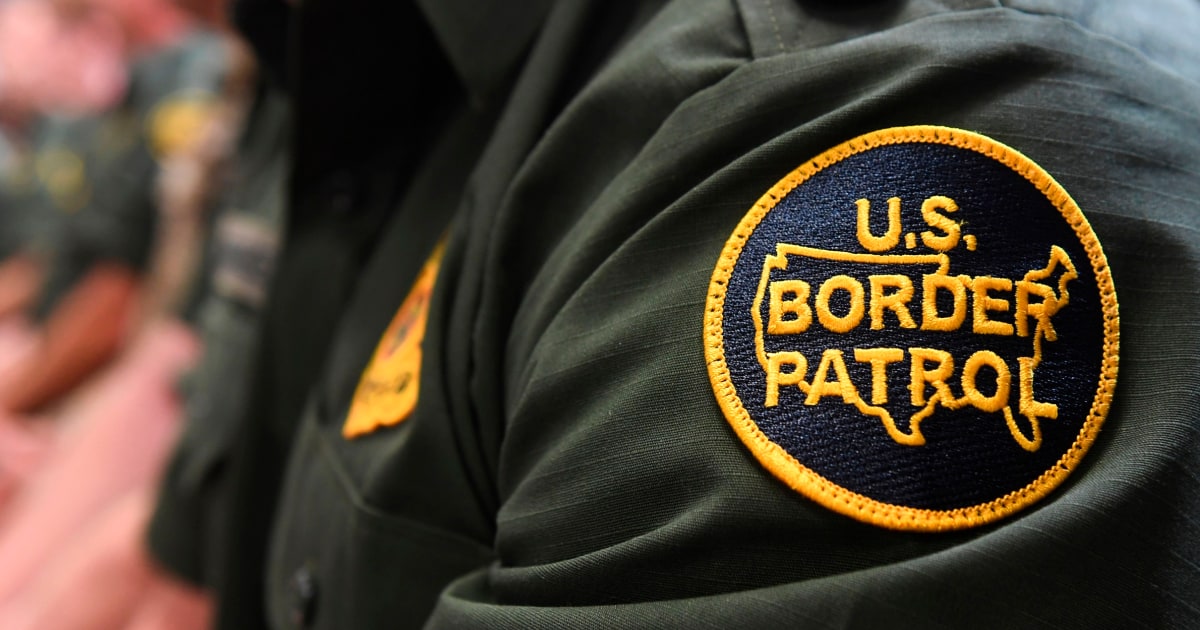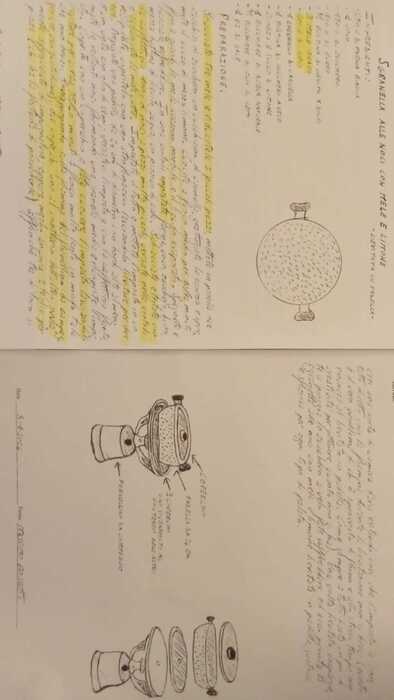Of all that is unknown about the Nuevo Laredo massacre, and it is quite a lot, there is a determining moment: that of the first shot.
Of the four soldiers who, according to the report submitted to the Prosecutor's Office, fired their weapons against the civilian van last Sunday, someone must have done it first.
The others followed.
They fired more than 60 times.
They killed five young people and left another badly wounded.
One more escaped unharmed.
There was not, as far as is known, a previous aggression, a provocation.
Nothing.
The case is reminiscent of previous situations, the Tlatlaya case, for example, with Enrique Peña Nieto (2012-2018) at the head of the Government, or that of the Tec de Monterrey students, in the years of Felipe Calderón (2006-2012).
But also to cases of the current administration, with Andrés Manuel López Obrador, such as that of the four-year-old girl Heidi Pérez, who died in September, also in Nuevo Laredo, supposedly by military shots, without the Army having so far explained how it could happen.
There are cities in Mexico, entire regions, that are experiencing low-intensity wars.
Life makes a gap between chases and shootings and sometimes it seems that everything is fine.
But the air carries gunpowder and at the slightest it ignites, criminals against criminals, delinquents against soldiers... Then war and its modes appear, especially in cities like Nuevo Laredo, where there has been no municipal police for years and it is difficult to see a police patrol. the state one.
The military is the authority there and many people agree with it.
The Manuel Cavazos Lerma neighborhood where five lost their lives, in Nuevo Laredo, Tamaulipas. Mónica González Islas
A resident of the place where the attack occurred on Sunday said this week that if the military acted as they did, it would be for a reason.
He was not a fanatic, nor a staunch supporter of the Government, just a young man who lives 10 meters from where the dead fell this time.
"They do their job," he said.
“If they were stopped, why didn't they stop?
They recently stopped me, I bring my sporty car, with tinted windows.
I was coming back from the cinema with my girlfriend.
They stopped me, they asked permission to search the trunk.
All good.
They don't kill just like that."
War and its ways.
Fast driving a van of the year is for some a natural way of approaching the forbidden, a form of rebellion.
For others, a gesture that transcends the rebellious and frames its protagonists in the field of the eradicable.
These days, the discussion in Nuevo Laredo revolved around the acceleration of the boys, the reason, if they did it.
Did they flee from the military out of fear, out of rejection?
Were they hiding something?
Did they speed up or drive fast, entranced by their own youth?
The above matters because it is assumed as a preamble to military aggression.
A drag race as an example of criminal activity.
The truth is that there is nothing else, right now, that explains the shots.
The Ministry of Defense has tried to settle the case, providing data that does not even correspond to the report given by the command of the soldiers on the ground that day.
Relatives placed flowers and candles at the place where five young people lost their lives.
Monica Gonzalez Islands
Opacity reigns in the case.
It is known - dozens of media outlets have said so, citing Defense sources - that the military Prosecutor's Office has prosecuted the four alleged shooters for a crime of disobedience.
It is unknown if the Attorney General's Office (FGR) accuses them of something.
The following lines summarize what is known about the massacre.
The car wash chamber
According to the account of the command on the ground, the cavalry captain Elio N, a convoy of four military vehicles, four pick up trucks and a sandcat, a kind of tank, patrolled Nuevo Laredo early Sunday.
They were in the Cavazos Lerma neighborhood, in the southwest of the city.
The captain says that they were driving down Ciudad Mier street when they heard shots.
They headed towards the place where they supposedly came from and, when they reached the intersection with Huasteca street, they saw a white pickup.
The boys'.
"They accelerated their march when they saw our presence," says the officer.
The story continues with the boys circulating up the Huasteca and the military behind.
On Huasteca and Jimenez, the boys allegedly struck a vehicle that was parked on the street, a dark blue Hyundai Accent.
They went one more block, to Mendez, and stopped.
The captain says that then two of the trucks were paired with the crashed one.
He says that at that moment they heard more shots.
And that, right after, he "heard that several of his elements fired their firearms."
The first shot.
It's hard to tell who was the first to pull the trigger.
The captain says that he ordered the ceasefire via radio and that he got out of the truck to ask who it was.
Four corporals raised their hands.
This part is strange because three of the four responsible were in his truck.
Didn't the captain see them?
The other shooter was in charge of the machine gun in the turret of the second pick up.
Although it is not possible to determine it at the moment, it is logical to think that the first shooter was the latter or the corporal in charge of the turret of the captain's truck.
The other two were in the cockpit and wasted time getting out and aiming.
The first ones were already outside.
Relatives accompany the hearse with the body of Gustavo Angel Suárez in a caravan to bury him.
Monica Gonzalez Islands
The captain's story has other weaknesses.
For example, the security cameras.
The officer points out that they were patrolling Ciudad Mier street when they saw the boys' truck and began to follow it.
But the security camera of a nearby business, a car wash, released these days, shows that the pursuit actually began 500 meters back, at least from Madero street.
In any case, the monitoring stopped a little further on, at the intersection between Huasteca and Méndez.
There, the versions of the captain and the sole survivor are totally opposite.
Alejandro Pérez, the seventh passenger, the only one who was unharmed, says that they circulated normally.
The boy says that they had left the Mr. Pig nightclub, in the center, 25 minutes from Cavazos Lerma.
They were going to drop off the first ones at home.
In the recording you can see how his truck passes and about 50 meters away, two military vehicles.
The truck, as the statement released by Sedena this week says, has its lights turned off.
Of the two military trucks that follow her, one has its headlights turned off as well.
It is difficult to determine if the cars are going very fast or not
The shots after
In the videos of the car wash, only two of the four military vehicles that Captain Elio N mentions in his report are visible.
Neither the third pick up nor the sandcat appear.
Were they going down the same street or did they take another path in pursuit?
The captain does not talk about them, he only names them at the beginning and at the end, in the list of personnel that he participated in the event.
This is important because it alludes to the mechanics of events from the start of the shooting.
Both the captain and the Secretariat suggest in their report and statement that the shots came from behind, when the chase ended due to the collision of the boys.
But the autopsies of the corpses suggest something different: the bodies present shots from the front, the back and the side.
Family and friends during the burial of Gustavo Angel Suárez in the municipality of Hidalgo, Coahuila.
Monica Gonzalez Islands
The issue here is understanding the role of the two missing vehicles in the report and their occupants.
Did they arrive from the front, intercepting the pick up of the young people?
It is not known.
The captain only says that the corporals in command of the two pick-up machine guns and two others who were with him in the cabin fired.
If so, they must have done it from different points: from the front, from the side and from the back.
According to the captain, after the attack, the driver and co-pilot were left lying in their seats, dead.
The autopsies show that they received 12 and 10 shots respectively.
Alejandro Pérez was behind the co-pilot.
His brother Gustavo was behind him too, as was his friend Charal, whose real name was Jonathan Aguilar, and two boys who were closest to Wilberto Mata, the co-pilot, Alejandro Trujillo and Luis Gerardo N.
Of those behind, Luis Gerardo and Pérez survived.
The first is still in the hospital and has been in a coma for several days.
Pérez says that when he finished the first burst of bullets, he got out of the car and got on his knees.
He said that he saw how a soldier approached and threw Luis Guillermo, wounded inside the car.
He says that the boy was still out and that, once in the street, they shot at him again.
It is not clear what happened to the other three in the back.
Photos of the scene show two bodies outside the vehicle, one at the door of a house and the other around the corner.
The latter was Pérez's brother.
The boy recounts that after shooting Luis Guillermo, the soldiers forced him to throw himself on the ground and stay that way.
He says that while he was face down, he heard two more shots.
He does not know if they went against his brother or against one of the other two, Trujillo or Charal.
The woman who lives in the house, Sara Luna, 60, told this week that when she heard the shots she looked out the door and saw two boys on the ground.
She also says that she heard moaning, but that a soldier ordered her to go "into the room."
Soldiers in a stagecoach in front of the Prosecutor's Office in Nuevo Laredo, Tamaulipas. Mónica González Islas
Personnel from the Attorney General's Office (FGR) arrived at the scene more than two hours later.
It was then that an agent took Pérez into custody, treated until then as a criminal.
After a while his father arrived, Enrique Pérez, who had gone out for a barbecue early.
The man at the post told him about the shooting.
Since his children had not come home, he went over to look.
Mr. Pérez arrived at the scene just as the chaos began again.
The images are shocking.
After the FGR processed the scene, a military tow truck tried to remove the boys' vehicle from there.
By then, it would have been 10:30 a.m., dozens of neighbors, family members, and friends of the young people were already there, some very aggressive, like the father of Gustavo Suárez, the driver of the truck.
The boy lived in Texas, but he used to go there.
He was building a house for himself and his girlfriend had gotten pregnant.
In the images, Suárez's father is seen attacking the military, yelling at them, demanding them.
Other people attacked at least two soldiers in groups, kicking and punching.
The military tries to get rid of them by shooting into the air.
Another shoots to the ground.
Some soldiers attack journalists.
They also attacked Raymundo Ramos, from the civil organization Human Rights Committee of Nuevo Laredo.
Mata and the CDN
At Gustavo Pérez's funeral, Martín Almanza and his bandeña played on Wednesday for his relatives.
Some were songs of mourning and loss, others were corridos in honor of the Northeast Cartel (CDN), a local criminal organization, heir to Los Zetas, who made Nuevo Laredo their fiefdom.
Since the massacre, two stories have tried to prevail in the media and on social networks.
The first denounces military malpractice and criticizes that something like this has happened again, as happened before with Peña Nieto and Calderón.
The second avoids talking about the facts and focuses on what the boys did in their lives.
This second account concludes that they were all hitmen and almost deserved death.
Family and friends during the wake of Gustavo Angel Suárez. Mónica González Islas
Gustavo Pérez's funeral was not the best place to find out about the boy's life.
Interviewed days before, his father, Enrique, told that the brothers worked with him in Laredo, Texas, fixing trailer boxes.
He said that their dream was to get their trailer driver's license and become “transfers”, drivers who carry loads on both sides of the border.
Can both things coexist, the illusion of a good job, with a youthful destructive impulse, mixed with the media push for crime, easy money, the tribe?
Yes, why not.
In the case of Pérez, however, there are no photos or videos that link him to the CDN.
Funeral music can be understood as something cultural, tribal, part of a geographical, sentimental identity.
It is also true that the above sounds justifying and relativistic.
In the case of Suárez, the situation is similar.
His family took him to bury him in Hidalgo, Coahuila, an hour from there.
His son would rest forever in the family vault.
There was a music band, there were narcocorridos.
In the autopsy, the experts noted tattoos of a devil, the dollar sign, the Virgin Mary, Christ, palm trees, and a phrase: "I ask God that my mother be my mother again."
Another thing is Wilberto Mata.
Or not.
His image has starred these days in the arguments of the followers of the Church of the Second Story, which ignores the facts and focuses on the criminal context of the boys.
In several images, broadcast by the social media channel Frontera Al Rojo Vivo, Mata appears with a long weapon, a bulletproof vest with the letters CDN, etc.
Raymundo Ramos, representative of the Tamaulipas Human Rights Committee, during the funeral of Gustavo Pérez. Mónica González Islas
It's not the only thing.
In his autopsy, the expert pointed out the tattoos as well.
A devil, a man smoking, a woman with a hat that says Laredo, a Santa Muerte with her last name and initials, CDN.
And one more.
Friends of Gustavo Pérez and Mata pointed out in an interview on Monday that the only one of them who did "work" was Willy.
They immediately qualified that even if he worked -with the CDN- that night he was partying.
On Tuesday morning, before any burial, Wilberto Mata's father, Rubén Mata, 48, went to a city law firm to sign a complaint against whoever is responsible for the events of the previous Sunday.
His wife didn't even get out of the car.
He, a man in pointed boots and a tight shirt, was crying.
He answered some of the questions that are asked at the beginning of the interviews: Where do you live, how many brothers were there with Willy, what did he do?
Things like that.
After a while it became very evident that the real questions pointed to the photographs that were already circulating everywhere.
Although the fact itself, the massacre, had nothing to do with what he would have done to his son, the pressure of the Second Story demanded answers.
Mr. Mata had not seen the photos.
He saw them then for the first time.
One by one, Mata said: "Yes, he is my son."
He said yes in which Wilberto appears with a huge rifle next to a Santa Muerte;
in another in which he appears with an AR-15 and a vest with the legend CDN;
in another that he supposedly appears in a prison... After affirming the undeniable, Mata said nothing more.
Asked if he thought after seeing them that he was the same as his son if he was involved in the crime, the man said no.
Then he left.
subscribe here
to the EL PAÍS México
newsletter
and receive all the key information on current affairs in this country











/cloudfront-eu-central-1.images.arcpublishing.com/prisa/KMEYMJKESBAZBE4MRBAM4TGHIQ.jpg)



